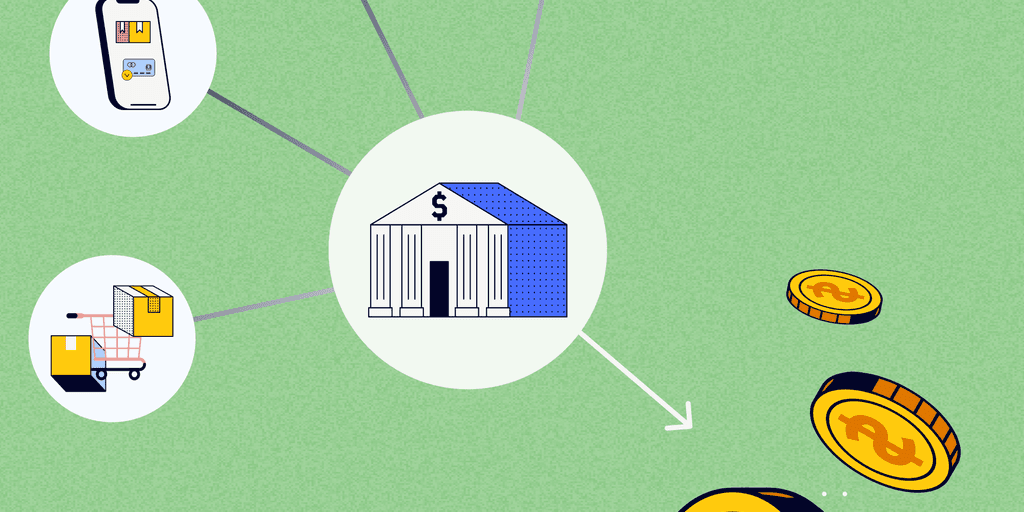
How to Streamline Transactions Through Payment Gateway Testing
- 10 min read
This article explains how you can streamline transactions through payment gateway testing.
You’ll also learn how to assess the efficacy of your gateway and how to make ecommerce transactions more secure.

This is a guest-post from RealVNC, a “remote access platform for engineers looking for the most reliable, most secure solution”.
—
When it comes to processing payments online, it’s vital for all parties that everything works correctly. For most vendors, one of the best options for ensuring their customers’ experience of making a purchase is a good one is to use a payment gateway.
Whether you’re a vendor largely managing your payment solution in-house or you’re working with a third party, it’s important to be aware of the testing process and why it’s necessary.
In this article, we’ll take you through everything you need to know, including what to look out for to make sure that your payment gateway is functioning exactly as intended.
Jump to a section of interest:
What is a payment gateway?
Every organization that sells something—from global SaaS companies that offer a remote desktop app for Android to national automotive manufacturers that offer replacement parts—needs a way to take payments securely and efficiently.
For many, the most straightforward option is to use what’s known as a payment gateway. This is a piece of software that enables transactions by processing payments for purchases made online. It operates as a third-party interface between the customer and merchant, ensuring the safe and quick transfer of funds between them.
Originally, payment gateways only processed credit card transactions, but that's no longer the case. Today, they can process a large variety of B2B payment types, such as debit cards, virtual credit cards, and electronic transfers.
Security is paramount (for both buyers and sellers), so payment gateways encrypt data such as the customer’s card details as a standard part of the process. Once the data is collected, it’s sent to the merchant’s bank for approval. Then the bank sends a confirmation to the merchant and customer.
A typical payment gateway process will look like this to the customer:
Step 1—payment details: A page on a merchant’s website displays the company’s name, the total amount to be paid, and any additional comments on the transaction. Once the customer has clicked to confirm, they’re transferred to the payment gateway.
Step 2—payment page: The customer once again sees the details of the payment to be made, this time on the gateway site. They check everything and then click to proceed.
Step 3—payment status page: The customer is redirected to this page on the merchant site pending approval.
Step 4—payment result: This page shows whether the payment has been approved or declined and is hosted on a merchant’s site.
The beauty of payment gateways is their simplicity. They offer quick payment processing as well as easy opportunities for global expansion, as payment gateways often support multiple currencies and can be used to take online payments from all over the world
Why payment gateway testing is necessary
As with any software app, testing is a vital part of the process of development and integration with existing systems. You have to be certain the payment process will function properly and securely in every case, since the success of your business depends on it.
From the customer’s perspective, the payment gateway should be so easy to use that it almost seems as if it’s not there. Your customer should be guided from your site through the gateway and back again in a smooth fashion and encounter no problems.
However, when integrating software into a site, unexpected issues can crop up. For example, it’s important to know how the app behaves when the customer is suddenly disconnected mid-transaction. Other potential problems include the possibility of payments accidentally being taken twice, or transactions proceeding without having captured all the necessary data.
So, it’s vital to test every aspect of the process before it goes live.
Elements of payment gateway testing
Whether you’re performing the payment gateway testing yourself or working with a separate team, as a vendor you need to be aware of what to look out for.
Payment gateway testing falls into four broad categories:
Functionality
Performance
Security, and
Integration
Let’s take a closer look at each.
1. Functionality
Functionality testing ensures the software app you’re using does exactly what it claims to. Does it handle orders correctly? If it needs to perform additional tasks such as calculating taxes, does it do so accurately? The way to approach this is to attempt to make transactions and see what happens. The tester will replicate as many different scenarios as possible to try to find unusual errors.
2. Performance
This focuses on how the app performs when it’s handling a large volume of transactions. Given the growing popularity of online shopping, and particularly mobile payments, it’s crucial to check that the app can handle lots of transactions at once.
3. Security
Security has to be watertight when we’re talking about transfers of money. Customers making a purchase must have confidence that their sensitive financial data will be kept safe during online shopping.
Security testing ensures the data is encrypted before transmission and personal information is stored correctly. This should also encompass checking whether the payment gateway isPayment Card Industry (PCI) compliant—you’ll find more on this below.
4. Integration
It’s critical to verify that the payment gateway and site using it work well together. The integration tester will make sure every aspect of the procedure works, from the initial input of data to final confirmation.
It is also worth testing how the payment gateway softwareintegrates with the rest of your tech stack. For example, if you’re a large business you might have remote tech support workers who are there to step in if the payment gateway system goes down. In this case, you’ll want to make sure that if they’re using a remote PC access software or VPN, they’re able to gain access and fix the problem seamlessly.
Payment gateway testing: what to include
You can’t solve all problems in a single meeting, and a methodical approach to payment gateway testing is essential. Here, we outline a number of elements that are important to include during a payment gateway testing process.
- Collect credit card numbers to be used for testing. These should include a variety of card types as well as both valid and invalid cards.
- Verify that all mandatory fields on the payment page are working properly. All essential data should be collected using these.
- Attempt a payment using a number of different cards you’ve already collected, including both valid and invalid ones.
- Repeat for each type of payment offered on the site, including electronic transfers. The tester should also attempt transactions with invalid cards to ensure the software returns the correct notification and credit card processing fees are not charged.
- Check how the application behaves when a transaction is successful. Is the customer redirected to a page confirming successful payment? Does the customer receive a separate confirmation notification, for example, via email?
- If a payment fails or the app stops responding, how is the customer notified? Is there an adequate error message generated?
- Check what happens when the internet connection is suddenly cut during the process.
- Verify that the process functions properly when the currency or language format is changed.
- Investigate what happens when the customer’s session expires.
- Verify that the transactions take place on a secure channel.
This list is not exhaustive. Your requirements are likely to vary depending on your business, which means that testing procedures will be slightly different each time and need to be tailored to you.
Common questions about payment gateways
There are a few questions about payment gateways that tend to crop up over and over again. Here are answers to two of the most common ones.
What is PCI-DSS compliance?
PCI-DSS stands for “Payment Card Industry Data Security Standard”. It’s an industry standard designed to protect credit and debit card transactions and ensure the safeguarding of sensitive personal data.
PCI-DSS compliance is mandated by the PCI Security Standards Council. This body consists of the five largest credit card issuers globally: Visa, American Express, MasterCard, Discover Financial Services, and JCB International.
The standard obliges all merchants to:
Build and maintain a secure network
Maintain a vulnerability management program
Implement strong access control measures
Regularly monitor and test networks
Maintain an information security policy
Using a trusted payment gateway partner helps merchants meet these obligations in full.
What about refunds or canceled orders?
Any tech solution implemented by professional organizations has to be fit for purpose, so it’s important to make sure your research is thorough.
One obvious element of payments is they don’t always go one way. That means there needs to be a protocol for issuing refunds and open mediums of communication to negotiate transactions. In the case of payment gateways, how this is handled depends on whether the merchant’s bank has already received (“captured”) the payment or not.
If the payment hasn’t yet been settled when the refund is requested, the transaction can simply be voided and the money returned automatically to the customer’s account. On the other hand, if it has, the refund process kicks in. This initiates a new process that takes money from the merchant account and credits it to the customer’s account.
A smooth refund process is part of an excellent customer experience, and should be top priority, especially if you’re a big business dealing with large payments.
Make sure you have various support channels to help customers if something does go wrong. From using 24 hour AI chatbots for simple requests to implementing an automatic call distribution software so you can handle the more complex issues, you want to ensure that your customers are able to get the support they need when they need it.
Ensuring trust with payment gateway testing
The riskier nature of card-not-present transactions means that payment gateway testing and security will always be of the utmost importance for any online vendor. Through rigorous testing and a keen understanding you’ll be able to make sure that customers are able to pay safely and securely–promoting trust and confidence amongst your customers.
Ultimately, payment gateway testing is a fundamental part of ensuring that transactions proceed without a hitch, and as the number of payments made online continues to increase across the globe, the need for safe and effective payment processing solutions isn’t going away any time soon.


